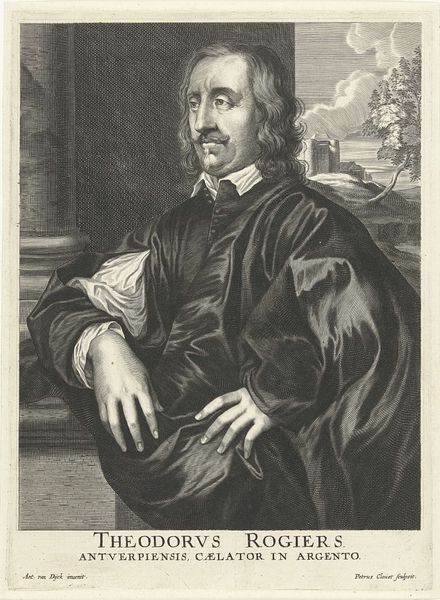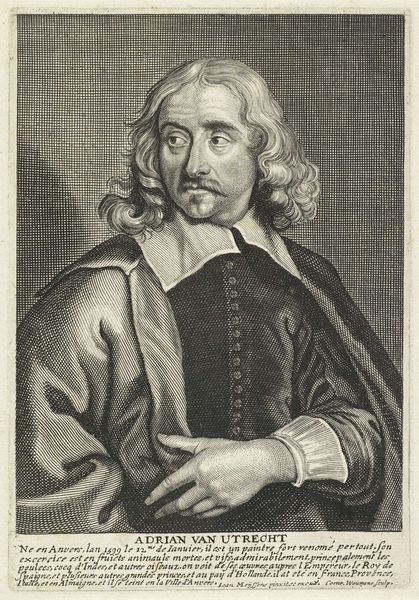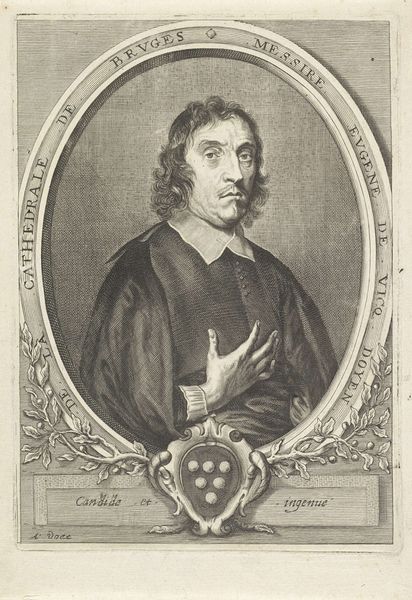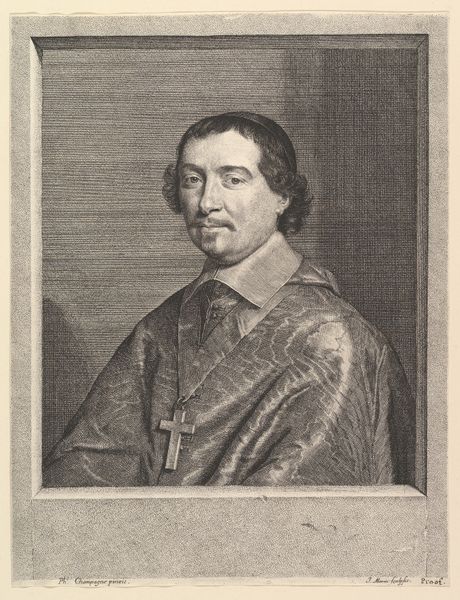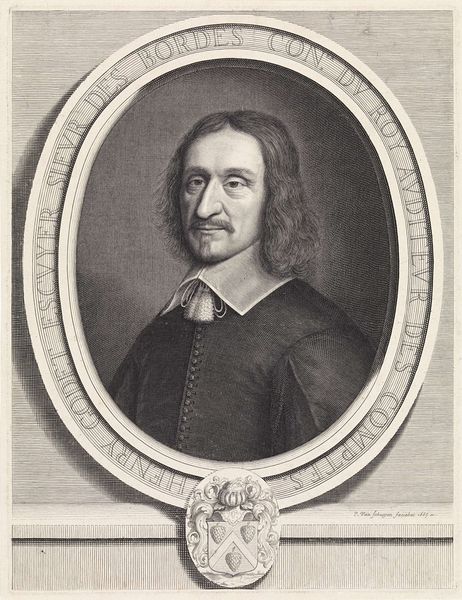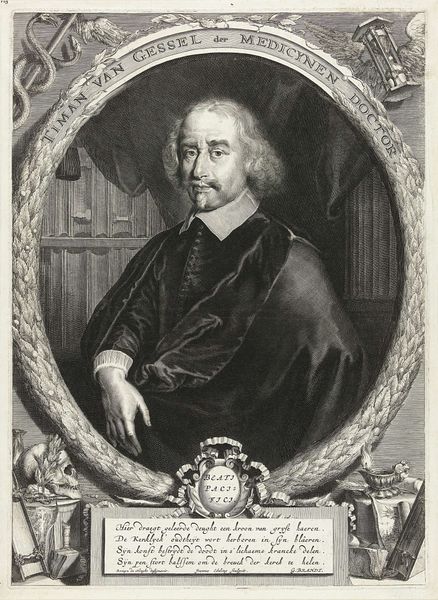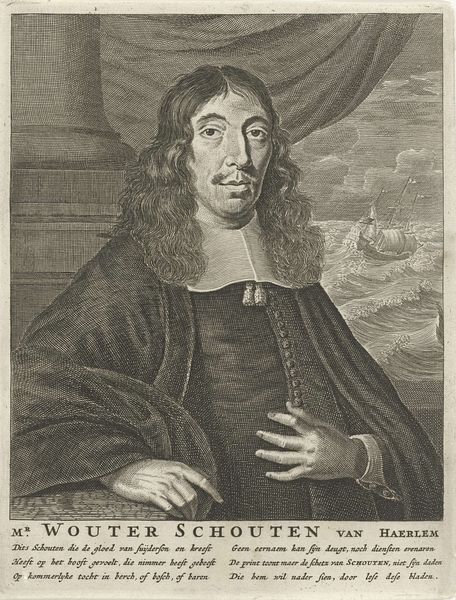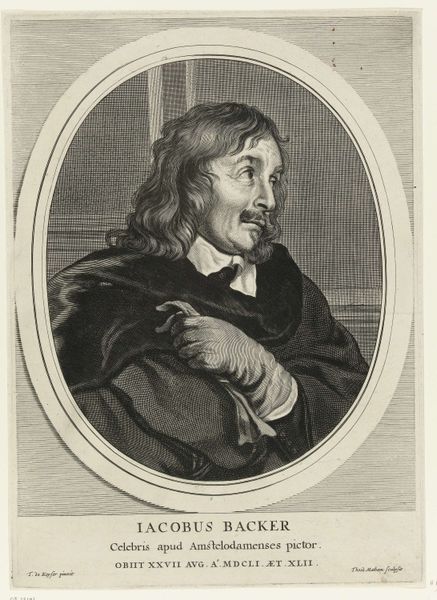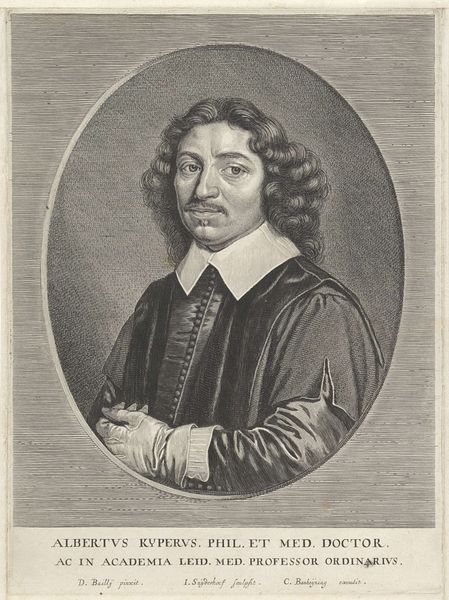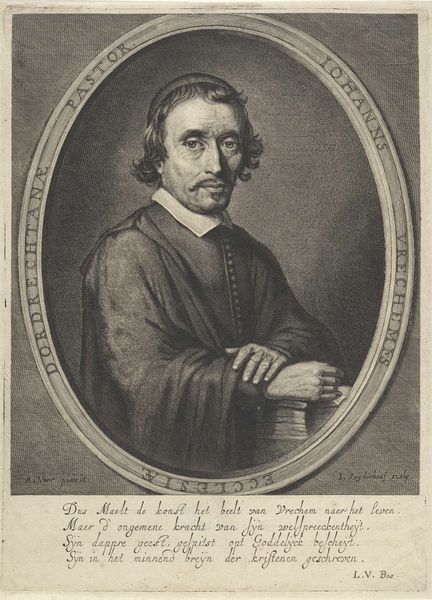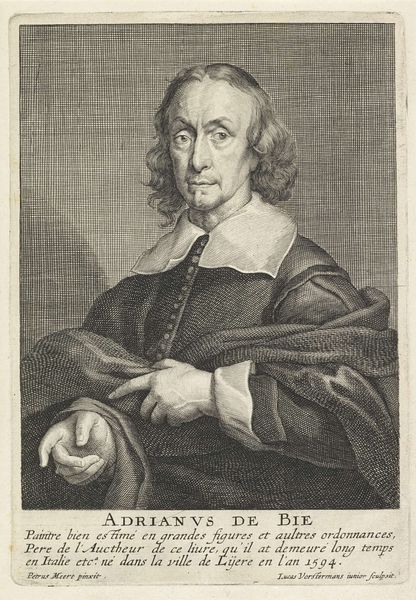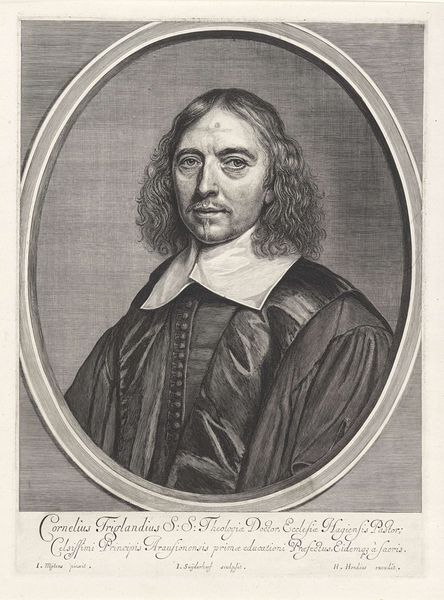
print, engraving
#
portrait
#
medieval
#
baroque
#
portrait image
#
dutch-golden-age
# print
#
old engraving style
#
engraving
Dimensions: height 156 mm, width 108 mm
Copyright: Rijks Museum: Open Domain
This portrait of Johannes Pricaeus was made by Reinier van Persijn, likely in the mid-17th century. It's an engraving, a printmaking process that demands meticulous skill. The artist would have used a tool called a burin to carve lines into a copper plate, creating a dense network of hatching that, when inked and printed, forms the image. Notice how the density of lines creates areas of shadow, giving form to Pricaeus’s face and clothing. The very precision of the engraving mirrors the sitter's status. Engraving, unlike a quick sketch, was a labor-intensive process, suggesting the importance of the subject and the patron who commissioned the work. The sharp, repeatable lines also speak to the rise of print culture at the time. Engravings like this circulated widely, disseminating images and ideas across Europe. The process wasn't just about artistic skill, but also about the mechanics of reproduction, making it a fascinating intersection of craft, commerce, and social identity. By focusing on the engraving process, we can appreciate how technique and materials intertwine to create meaning.
Comments
No comments
Be the first to comment and join the conversation on the ultimate creative platform.
